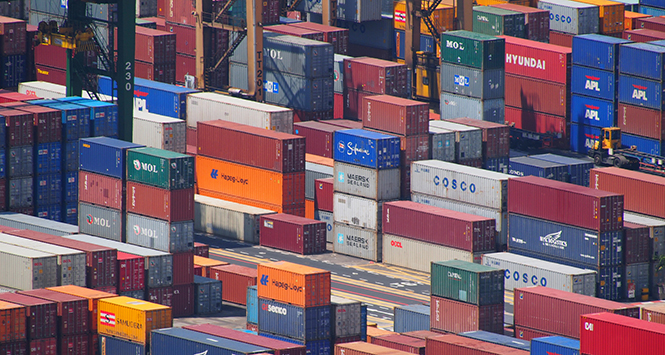Preparing for the future of logistics – the Singapore way

Photo: Sarah Starkweather/Flickr
The government of Singapore recently outlined its vision for the country’s future, describing how different sectors could harness technology, innovation and mega-trends in order to take the city-state to the next level. This approach includes a dedicated Industry Transformation Map for the logistics sector, which accounts for 7.7% of Singapore’s GDP and over 8% of jobs. Logistics is also understood as a crucial enabler for other significant parts of the economy, such as manufacturing and trade.
How is Singapore anticipating the transformation of logistics?
Singapore has been considered a major logistics hub for quite some time, and is currently ranked first in Asia according to the Word Bank’s Logistics Performance Index. The sector, however, is experiencing significant transformations such as the rise of digitally enabled logistics services, and the emergence of new delivery capabilities (autonomous vehicles, 3D printing).
The Industry Transformation Map (ITM) will help Singaporean logistics keep its competitive edge in this rapidly evolving context, and aims to achieve a value-added of S$8.3billion (US$6 billion) by 2020. In particular, the ITM intends to strengthen innovation, productivity, as well as talent development across the logistics sector—including by leveraging trends such as artificial intelligence and collaborative robotics:
-
- Focus on Innovation and Productivity
The Government will work closely with research institutes and private companies to develop a new research ecosystem and tap the full potential of technological innovation (autonomous vehicles, big data…). To build demand, companies of all sizes—from multi-national corporations to small and medium enterprises (SMEs)—will be encouraged to collaborate with research institutes and to develop their own research initiatives.
Further, the Government will be investing in state-of-the-art facilities. One example is the upcoming next-generation Logistics Hub that will house a multi-story Inland Container Depot (ICD), featuring a modern crane system, a multi-tenant logistics center, as well as a heavy vehicle park. Without a coordinated approach, these facilities tend to be scattered around; clustering them into a one-stop service hub will generate significant efficiency gains and reduce transport time by an estimated 20%. The government and the Container Depot Association will jointly develop traffic management and warehouse booking systems for the Hub to optimize traffic flows, scheduling, and space allocation. These innovations will be particularly beneficial to SMEs, which often don’t have the resources to invest in sophisticated logistics facilities of their own.
- Focus on Innovation and Productivity
- Focus on Talent Development
As part of this strategy, the Government is partnering with higher-education institutions to develop training programs in emerging technologies and trends such as big data analysis or e-commerce supply chains.
Singapore is also working to change the perception that the logistics industry did not offer structured career progression. The recent Logistics Career Industry Guide showcases the kinds of jobs available at various entry and senior levels. In that same spirit, a national Logistics Skills Framework will be initiated to educate professionals about job in the sector, salary benchmarks, and career pathways.
Three Interesting takeaways for emerging economies
- The importance of an integrated approach
A number of developing economies are beginning to see the economic benefits of a developing a comprehensive national logistics strategy.
Such a strategy should cover both infrastructure and policy, and all links in the logistics chain: road, rail, maritime transport, and aviation, logistics centers, customs.
An integrated strategy can help coordinate action across relevant ministries, such as transport, industry, trade regulation agencies, etc., resulting in more seamless supply chains.
A holistic strategy also needs to factor in the private sector, whose role is instrumental in providing logistics services, to complement infrastructure and policy.
- Partnerships between stakeholders are key to success
The successful implementation of a national logistics strategy requires strong partnerships between the government, logistics associations, the private sector, academia, and the workforce. Each is a key stakeholder playing mutually reinforcing roles. Singapore’s ITM was produced after extensive consultations with all these players.
Another example of effective collaboration is the Logistics Professional Conversion Program. This Government-supported program will assist with recruitment via a place-and-train model: participating companies will provide employment opportunities, while academic institutes will offer customized classroom sessions and mentorship by experienced practitioners.
- Invest today to get ready for tomorrow
The Singapore ITM will help logistics companies keep up with innovation and develop the necessary skills. Tertiary institutes such as the Center of Innovation for Supply Chain Management will support SMEs in identifying and implementing important innovations. The Singapore Logistics Association is anticipating the rise of new technologies and is already experimenting, for instance, with the use of Automated Guided Vehicles in logistics centers.
Similarly, developing economies have a lot to gain from anticipating the future trends that are likely to impact them most. For example, the growth of the middle class in many emerging markets will likely bring a major boost to areas like ecommerce and healthcare logistics: this could require investments in self-collection e-commerce stations, cold chain centers, and many other innovative solutions.
Trends such as automation, asset-sharing, and the internet of things are changing the world we live in and transforming supply chains. By preparing their workforce and investing in innovation today, developing economies have a unique opportunity to jump ahead of the curve and invest for their future!
Source: WorldBank